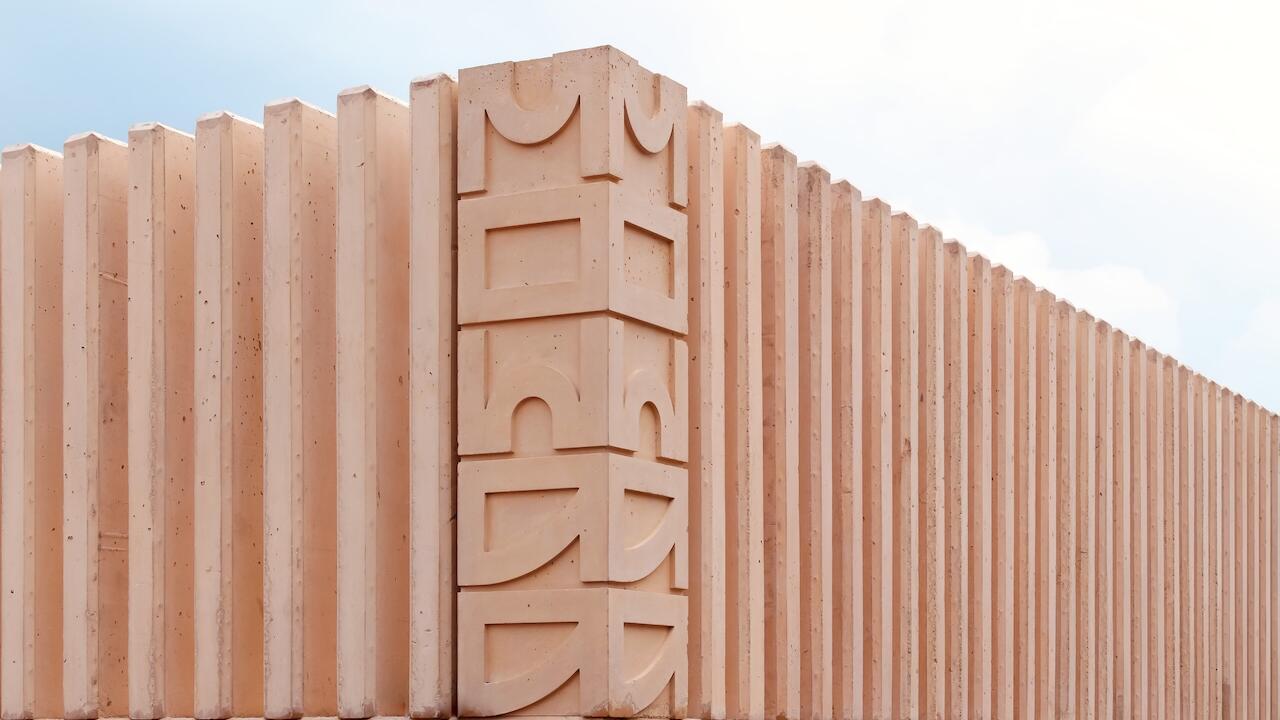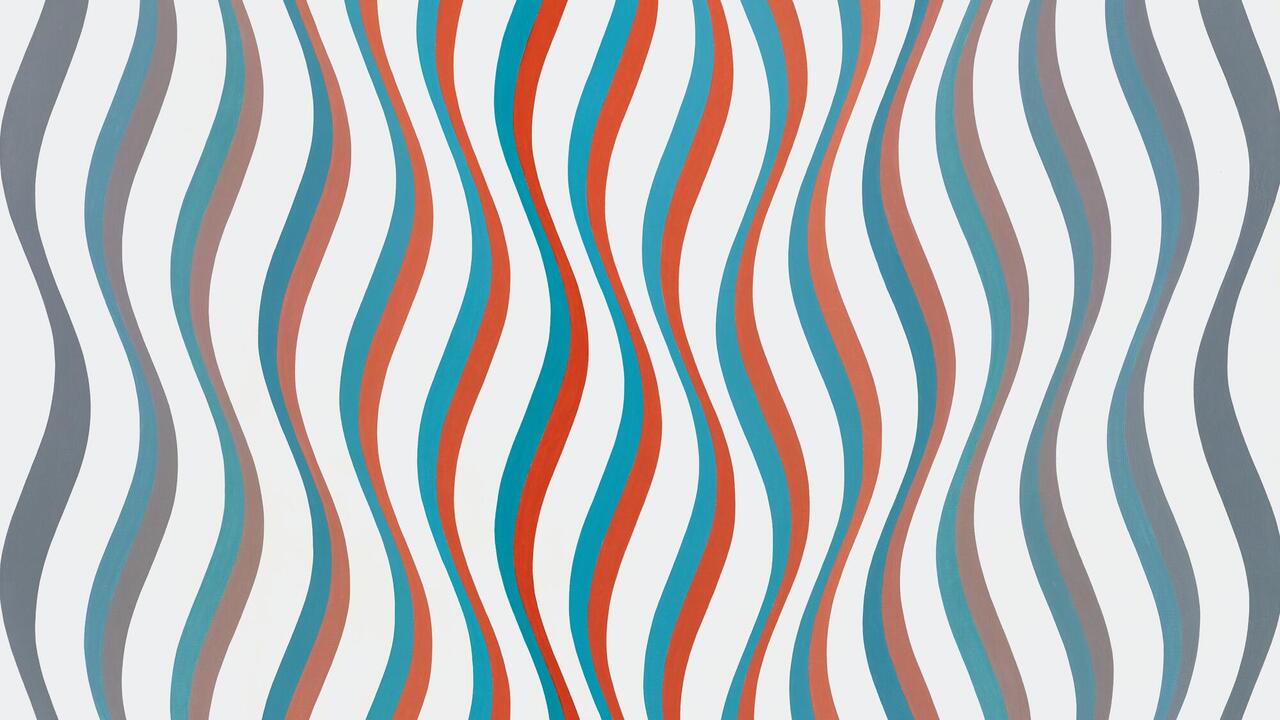Marcel Odenbach

Marcel Odenbach’s 2004 film In stillen Teichen lauern Krokodile (In Still Waters Crocodiles Lurk) is unforgettable. The pictures in question are not spectacular: landscapes, men dismantling a brick kiln after firing, muted sequences of children screaming. When their cries are finally heard, it comes as a relief. And then, hung in layers, there are the dirty clothes of the dead. The film is about the killing in Rwanda in 1994.
During visits to Rwanda in the early 2000s, Odenbach noticed that the country’s inhabitants were unusually reserved. He wondered whether this might be connected to the genocide. But how can something indescribable be translated into pictures? Not an easy task. Yet Odenbach managed to visualize the death, the terror, the crippling fear, without the results becoming merely accusatory or sensationalist.
As Odenbach worked on this film, he realized that it was increasingly becoming an encounter with his own history. Having grown up in postwar Germany among victims and perpetrators, Odenbach suddenly saw parallels to his own Cologne childhood: the taciturnity, the closed curtains, the inability of children to shout. The story he wanted to tell in pictures thus became his own. As Roland Barthes once asked: ‘Is not storytelling always the search for one’s own origin, to tell of one’s own trouble with the Law, to enter into a dialectic with emotion and hate?’
This constellation has clearly maintained its grip on him, as the show also dealt with Germany – a land of perpetrators and victims – as well as with Africa and with the liberating effect of crying out loud. As well as a film, the exhibition included large collages made using scraps of printed, handwritten and painted paper, produced in parallel to Odenbach’s filmic work. The process of collage-making – the cutting, gluing and mosaic-like assembly of tiny snippets into a large motif – resembles the electronic composition of material in video and digital film. Originally, these collages also functioned as preliminary sketches for planned films, only later becoming works in their own right. But they never became totally separate; they are still related to the films in formal and thematic terms.
The largest collage, measuring two by three metres, on which Odenbach worked with two assistants from June 2011 to January 2012 (as noted beside the signature on the work), shows a spacious terrace with two round tables and chairs offering views out over a mountain landscape. From a distance, it appears to be a drawing, the red and blue check pattern of the chair cushions the only strong colours in an otherwise grey-brown landscape. On closer inspection, an enormous number of scraps of paper with printed and handwritten words, drawings and photographs become apparent. It would take days to decode all these messages hidden in the picture. The handwritten texts are taken from letters sent from the front by Odenbach’s grandfather, adorned with cheeky drawings of subjects including Hitler. The typewritten texts are from correspondence between Odenbach’s great uncle and the Gestapo concerning his half-Jewish descent. The mountains in the background are made from snippets from newspapers and magazines. In them, one finds the names of prominent Nazis, but also Lenin, Kurt Tucholsky, Heinrich Mann and Johannes R. Becher. And then one finally recognizes the terrace – the view from Hitler’s mountain retreat on the Obersalzberg. This place, associated with a barely conceivable violence, is so peaceful, so banal and everyday – indeed, Odenbach remembers similar garden furniture from his own childhood, hence the film’s title Familienfeier (Family Affair, 2011–12).
On the opposite wall hung a portrait of Joseph Kabila, president of the Democratic Republic of Congo – another collage, this time using clippings telling the story of Africa (Sitzfleisch, Staying Power, 2012). The president sits upright at a table, his hands laid one over the other. In the background are the attributes of his power: honours, photographs, a flag. On his right wrist, clearly visible, a large golden watch of the kind that costs more than one cares to imagine.
The final work was the two-screen film Außer Rand und Band (Going Wild, 2012). When in 2012 Odenbach was invited to show his work at the Friedrichshof Collection in Austria, the former main location of the commune run by the Vienna Actionist Otto Muehl, he went through its recently opened film archive, finding documents that contradicted any notion of a life of boundless freedom. They included footage of therapy sessions permeated by a sense of subliminal violence and voyeurism: a crying girl watched by unsympathetic, curious eyes; a grown man breaks down, screaming. Odenbach juxtaposes these scenes with children playing in what, with its couch and Persian rugs, is immediately reminiscent of Sigmund Freud’s study – Freud’s psychoanalysis having paved the way, among other things, for the idea of the liberating power of sexuality cultivated at the Friedrichshof commune. The children’s playing deteriorates, books are thrown from shelves. One immediately wonders who was using and abusing whom in this game, and at the commune. Everything seems to repeat. And then, finally, the scene from Pier Paolo Pasolini’s Teorema (1968): the main character’s scream in an empty desert landscape. At last, a loud, heart-wrenching, real scream – how liberating.
translated by Nicholas Grindell














